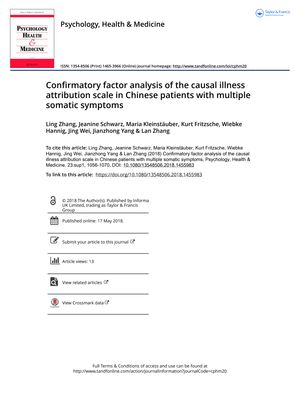Confirmatory Factor Analysis of the Causal Illness Attribution Scale in Chinese Patients with Multiple Somatic Symptoms
May 2018
in “
Psychology, Health & Medicine
”

TLDR The two-factor model fits better for Chinese patients' understanding of illness causes than the original four-factor model.
The study investigated the structure of causal illness attributions in a Chinese population using the Illness Perception Questionnaire-Revised (IPQ-R) and involved 665 participants. The original 4-factor model of the IPQ-R causes scale did not fit well for the Chinese sample. Instead, a two-factor structure, consisting of psychological attributions and risk factors, was identified. The psychological attributions factor was stable, indicating no significant differences in illness attributions between Western and Chinese populations. The study concluded that the two-factor model is more appropriate for Chinese patients with somatic symptoms. Items related to alcohol and tobacco use were recommended to be analyzed separately due to poor factor loadings. The study's limitations included potential selection bias and the use of a Western model of illness, suggesting the need for a culturally specific modification of the IPQ-R for China.
